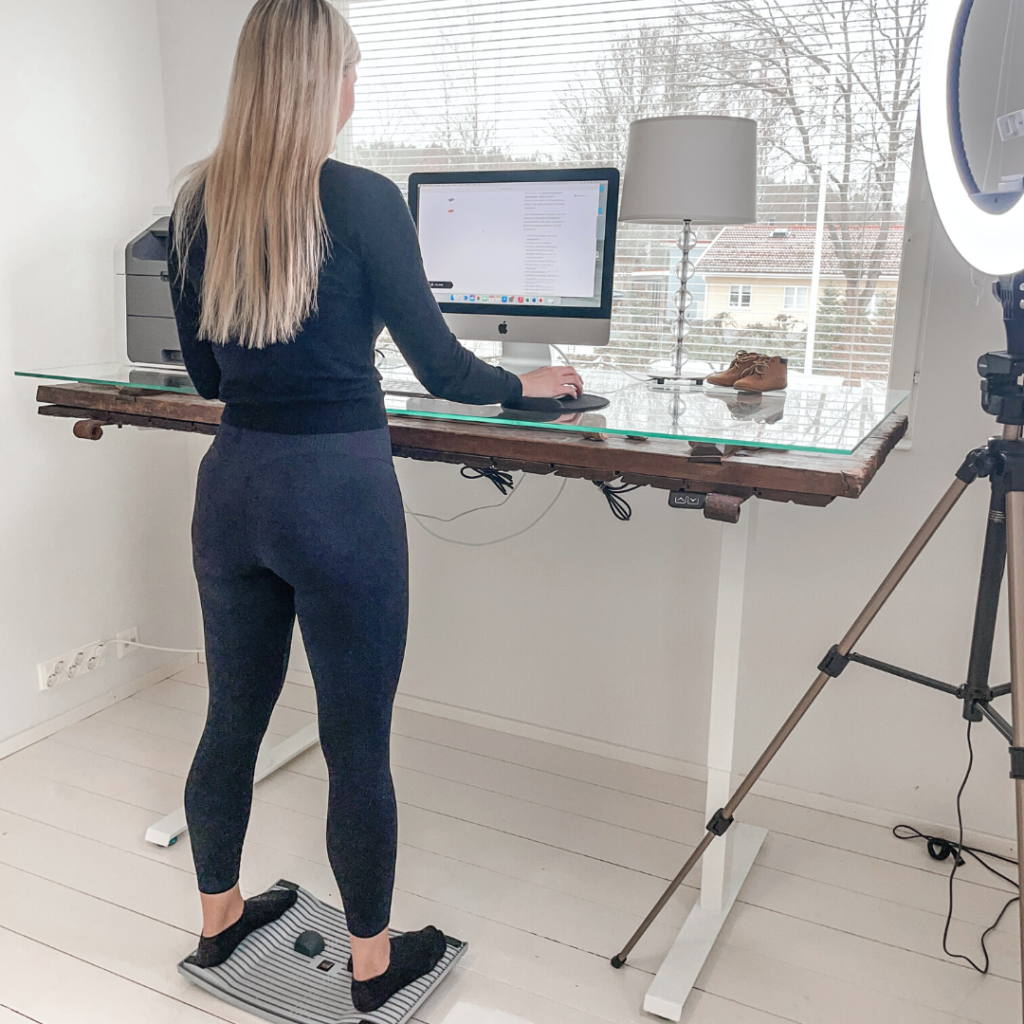Back pain at work can be effectively reduced through a combination of proper ergonomics, regular movement, and targeted stretches. To minimise discomfort, adjust your workstation so your screen is at eye level, your feet rest flat on the floor, and your back is properly supported. Take frequent movement breaks—ideally every 30 minutes—to release tension and improve circulation. Incorporate simple desk stretches to relieve lower back pressure. Using ergonomic tools like adjustable chairs, standing desks, and balance boards can significantly reduce strain on your spine during long work hours.
Understanding back pain in the workplace
Back pain is one of the most common complaints among office workers, affecting up to 80% of people at some point in their careers. The modern workplace often creates the perfect environment for developing spinal discomfort, with prolonged sitting being a primary culprit. When we sit for hours, our spine remains in a compressed position, muscles become inactive, and circulation decreases.
Poor workstation setup further compounds these issues. Monitors placed too low force you to hunch forward, chairs without proper lumbar support allow your spine to slouch, and improper keyboard positioning can create compensatory postures that strain your back.
Perhaps most concerning is the sedentary nature of office work. Our bodies are designed for movement, and the lack of activity throughout the workday not only weakens core muscles that support the spine but also reduces the flow of nutrients to spinal discs, accelerating deterioration and discomfort.
What causes back pain at work?
Back pain at work typically stems from a combination of static postures, improper workstation setup, and physical inactivity. Sitting in the same position for extended periods places excessive pressure on your spinal discs and surrounding muscles, particularly in the lumbar region. This constant pressure can lead to muscle fatigue, reduced circulation, and eventual pain.
Poor ergonomics significantly contribute to workplace back issues. Common problems include:
- Chairs that lack adequate lumbar support
- Monitors positioned too low, causing forward head posture
- Keyboards and mice that require reaching or awkward wrist positions
- Desks at inappropriate heights that force unnatural postures
Stress also plays a considerable role in workplace back pain. When under pressure, we tend to tense our muscles and adopt protective postures that can strain the back over time. This mind-body connection means that mental stress often manifests as physical tension in the back and shoulders.
How can you improve your workplace ergonomics?
Improving your workplace ergonomics starts with creating an optimised workstation that supports your body’s natural alignment. Begin by positioning your monitor at eye level, about an arm’s length away, to prevent neck strain that can radiate down to your back. Your chair should allow your feet to rest flat on the floor with knees at approximately 90 degrees.
Adjust your chair height so your elbows rest comfortably at your sides with forearms parallel to the floor when typing. Ensure your chair provides proper lumbar support that maintains the natural curve of your lower back. If needed, add a small cushion or rolled towel for additional support.
Your keyboard and mouse should be positioned so your wrists remain straight, not bent up or down. Consider using a document holder or adjustable laptop stand placed between your keyboard and monitor if you frequently reference papers, preventing repetitive twisting.
If possible, use a sit-stand desk that allows you to alternate between sitting and standing throughout the day. This variation reduces continuous pressure on your spine and engages different muscle groups, decreasing overall back strain.
What stretches can you do at your desk?
Simple desk stretches can provide immediate relief from back tension while improving circulation and flexibility. These movements can be performed right at your workstation without disrupting your workflow.
The seated spinal twist is excellent for relieving mid and lower back tension. While sitting, place your right hand on your left knee and your left hand behind you on your chair. Gently twist to the left, holding for 15-30 seconds before switching sides. This rotation helps mobilise your spine and release built-up pressure.
To stretch your lower back, try the forward fold. Sitting at the edge of your chair with feet flat on the floor, slowly bend forward, letting your arms hang toward the floor. Allow your head to drop and feel the stretch along your spine. Hold for 20-30 seconds, breathing deeply.
For upper back relief, try shoulder rolls and chest openers. Roll your shoulders backward in circular motions several times, then clasp your hands behind your back and gently lift your arms while squeezing your shoulder blades together. This counteracts the forward posture that develops during computer work.
Incorporate these stretches every 1-2 hours throughout your workday for best results. Even 30 seconds of stretching can provide significant relief when done consistently.
How often should you take movement breaks?
Movement breaks should ideally be taken every 30 minutes to effectively combat the negative effects of prolonged sitting. These brief pauses don’t need to be lengthy—even 1-2 minutes of movement can significantly reduce pressure on your spine and reactivate muscles that support proper posture.
During these breaks, focus on movements that contrast with your sitting position. Stand up, walk around, or do gentle stretches that extend your spine in the opposite direction of your working posture. Setting a quiet timer or using one of the many available break reminder apps can help establish this healthy rhythm throughout your day.
If your work requires intense concentration, consider the Pomodoro Technique—work for 25 minutes, then take a 5-minute movement break. This approach not only benefits your back but can also improve mental focus and productivity.
For longer workdays, incorporate at least one 10-15 minute break that includes more substantial movement, such as a brief walk or a series of stretches. These longer breaks allow for deeper muscle recovery and spinal decompression.
What tools can help reduce back pain at work?
Ergonomic tools and equipment can dramatically reduce back strain by supporting proper alignment and encouraging movement throughout your workday. A quality ergonomic chair with adjustable height, seat depth, armrests, and lumbar support forms the foundation of a back-friendly workstation.
Adjustable standing desks allow you to alternate between sitting and standing, reducing the continuous pressure on your spine that occurs with prolonged sitting. This variation in posture engages different muscle groups and improves overall spinal health.
Balance boards introduce subtle movement while you work, activating core muscles that support your spine and improving circulation to back tissues. These dynamic options help prevent the stiffness that develops from static postures.
External monitors, keyboard trays, and document holders help position work materials at optimal heights and angles, reducing the need to hunch or twist. Laptop stands are particularly useful for remote workers, bringing screens to eye level and preventing the forward head posture that strains the entire back.
Supportive footrests can help maintain proper posture by ensuring your feet rest comfortably on a surface when your chair is adjusted to the correct height for your desk.
Key takeaways for maintaining a healthy back at work
Maintaining a healthy back at work requires a consistent, multi-faceted approach rather than a single solution. The most effective strategy combines proper ergonomics, regular movement, strengthening exercises, and mindful posture awareness throughout your day.
Make small adjustments frequently rather than remaining in any position—even an ergonomically correct one—for too long. Your best posture is your next posture, as movement and variation reduce continuous pressure on any one part of your spine.
Strengthen your core muscles through regular exercise outside of work hours, as these muscles provide crucial support for your spine during the workday. Even 10-15 minutes of targeted core work several times weekly can significantly improve back stability.
Listen to your body’s early warning signals—mild discomfort is your cue to change positions, stretch, or take a movement break before more serious pain develops. Being proactive about back health is far more effective than addressing problems after they become severe.
At Gymba, we understand the challenges of maintaining back health in today’s work environment. Our ergonomic solutions are designed to integrate seamlessly into your workday, making movement natural and effortless. By combining these strategies with the right supportive tools, you can create a workplace that supports rather than strains your back.

